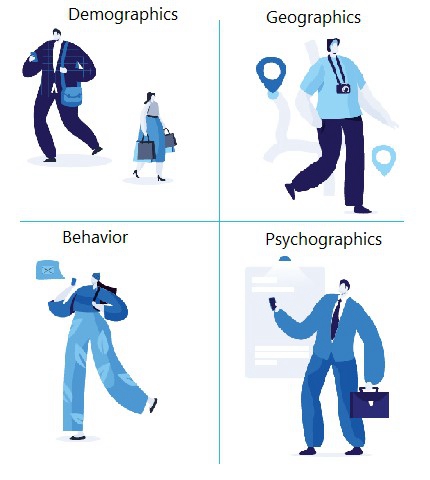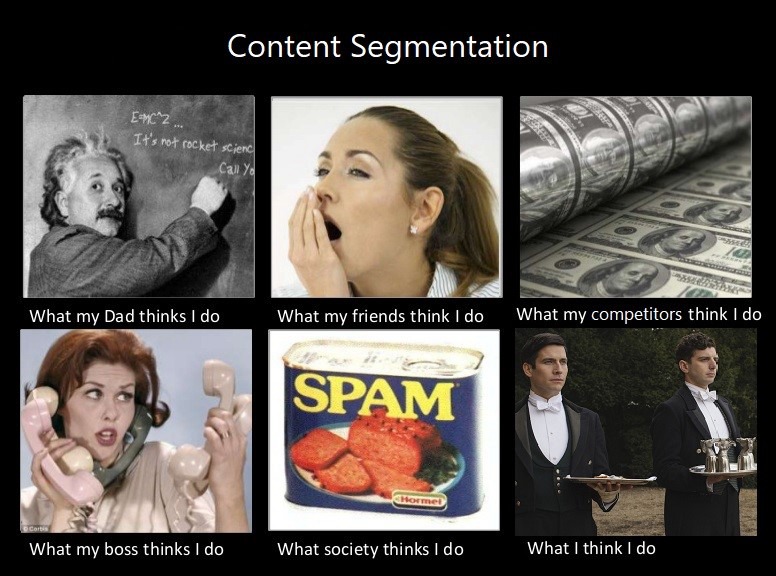Remember when segmentation was the “next big thing” in marketing? Marketers suddenly found themselves with all this data in their hands and for the first time were able to understand whom they were talking to. This enabled marketers to double down on crafting content that really resonated. The dynamic duo of content + data led marketers to quest after the Holy Grain of marketing – the mythical “segment of one”: unique micro-segments that convert at absurdly high rates.
Fast forward to now and where are we at? A handful of high-profile companies rode the hyper-segmentation wave to impressive growth: unicorns like Netflix, Amazon, Taobao. But for every segmentation superhero there were thousands of others who tried to catch up but made little progress, their grand plans dashed against insurmountable difficulties. Typically, these reasons fell into three categories:
- Not enough data
- Not enough content creation bandwidth
- Difficulty seeing clear ROI
This caused a lot of talking heads to prematurely declare that “segmentation was dead”. In fact, segmentation is more powerful than ever before. It’s a key driver of commercial growth. What’s dead is believing that segmentation will solve all your business problems.
There’s no shortage of highly sophisticated segmentation frameworks to choose from, usually some variation of:
- Demographics
- Geographics
- Behavior
- Attitudinal/psychographics

Each dimensionality has its own pros and cons:
- Demographics are easy, but not scalable
- Geographic information is easy but it doesn’t tell you much
- Behavioral is best, but it’s notoriously hard to act on in real time
- Psychographics are powerful but hard to get right
So what do you do if you’re one of the thousands of companies grappling with segmentation? What’s the path forward?
5 Super Simple Segmentation Tips
From the beginning, segmentation has been one of the core strengths of JINGsocial’s sCRM. Here are 5 super simple tips we’ve learned from 6 years of helping hundreds of customers master the segmentation game.
- Start with one segment
Many brands become paralyzed trying to scale up segmentation without first proving value. Focus on one segment you instinctively think should be high value. “Have kids” v “no kids”, “male v female”, “member” v “non-member”, “pipeline prospect v non pipeline”. Choose one and own it.
- Create content for that segment
Many brands struggle to create enough high-value content as it is, so they end up trying to repurpose existing content for segments by changing the headline and swapping in a new image. That’s a recipe for failure. Segmentation is about speaking to the segment authentically. There are no shortcuts.
- Your main KPI is actually not conversion, it’s engagement
Even if you manage #1 and #2, you probably aren’t going see a direct impact on sales. That’s okay! (Even if your CEO begs to disagree). Conversion is not built in a day. Simply getting more eyeballs onto your content is a win in itself. 30% open rates look a lot better on your monthly report than 5%. If you aren’t seeing engagement lift, then A/B test until you do.
- Build the case for conversion over time
Getting more eyeballs is one thing. Getting more sales or signing more deals is another. That requires looking at the entire path to purchase and applying the same principles. Create a landing page which synergizes with your segmented Wechat post. Craft a product offering which appeals to that same group. Only then will you see conversion lift. Once you do, showcase the win to upper management. Congratulations, you’ve just made your first segmentation case.
- Scale it up
Once you have proven you can lift engagement and conversion for a single segment, replicate the model. At this point segmentation becomes a driver of your marketing strategy, not an after-thought. Our clients in the luxury retail space have mastered the art of segmentation. You’ll hardly find a single one of them that doesn’t send anything but segmented content anymore. More content, more engagement, more conversion. That’s the goal.

How does JINGdigital support your segmentation strategy?
We are very proud to announce the launch of our newly upgraded [Segments] function powered by the most advanced filter around. The new function brings forward the core elements of the previous tool – you can still build ultra granular segments based on any combination of tags, fields and behavior – but with key new features including:
- Omnichannel
Now you can create [Segments] which include more than just your Wechat fans. This helps you analyze your campaign and channel ROI more accurately and gives you more options for engaging your fans wherever they are on the web.
Application scenario:
One of our retail clients uses their ecommerce Wechat Mini Programs as the endpoints for campaigns. Many of these Wechat Mini Programs shoppers do not follow the WeChat Official Account but will submit their phone number as part of the transaction. Using JINGtrack, the brand tracks all of these conversions back to JINGsocial, creating unique user profiles even for shoppers who haven’t yet followed the WeChat Official Account. These shoppers are then segmented into [Segments] for audience analysis while Wechat and SMS are used for further reach.
- Data tracking & data import
Segmentation means little without data. The more data you can bring to bear, the better your segments. [Segments] introduces a new portal where brands can upload proprietary big data sets from the CRM, member center or any other data warehouse. Group can also be enhanced with behavioral data tracked from H5 campaign pages, official website and Wechat Mini Programs using JINGtrack.
Application scenario:
Transactional data is a powerful signal for optimal segmentation. One retailer with considerable offline sales created an FTP connection from the OMS to their JINGsocial org. Their customer data is uploaded to the FTP and consumed by [Segments] static entry according to a regular schedule. The transactional data is then match with the existing user data to create 360° profiles and rich segmentation opportunities
- Static groups
In addition to dynamic groups which update in real time, brands can now create static groups. This is ideal for benchmarking cohorts and campaigns and carrying out long term audience analytics.
Application scenario:
One brand who works with us was interested in assessing the lifetime value of OA followers brought in from difference acquisition channels. So, it created static groups for followers acquired during particular months of the year and carried out longitudinal analysis through to ultimate follower churn.
- Time dimension
[Segments] brings a robust new set of time-based filters. This is the most often overlooked part of segmentation engines. It’s one thing to be able to group your fans by behavior, but to make a truly actionable segment it’s even more important to group them by when that behavior occurred.
Application scenario:
One of our B2B clients prioritizes reaching out to potential customers at the right time. From experience they know that if a visitor to the official website views a product video, that is a good indication that the prospect is ready for outreach. So the brand created a dynamic [Segments] that dynamically includes any user who has viewed the video in the last 24 hours. This group can then be re-targeted with limited-time offers.
- New design
In keeping with our emphasis on enhanced usability, [Segments] (组群)brings a new intuitive design. It’s easier than ever to create extremely granular segments and manage them over time.
Application scenario:
Batch tagging? Check. Smart search? Check. Preview capability? Check. Our new design puts the power of segmentation in your hands.

Conclusion
Mastering segmentation is not easy, but it doesn’t have to be Mission Impossible either. It takes time, but the results will speak for themselves:
- Improves your departmental focus
- Confers competitive advantage
- Places customer at the center of your strategy
- Improves retention
- Uncovers new opportunities
Happy Marketing!







REQUEST A DEMO

REQUEST A DEMO






